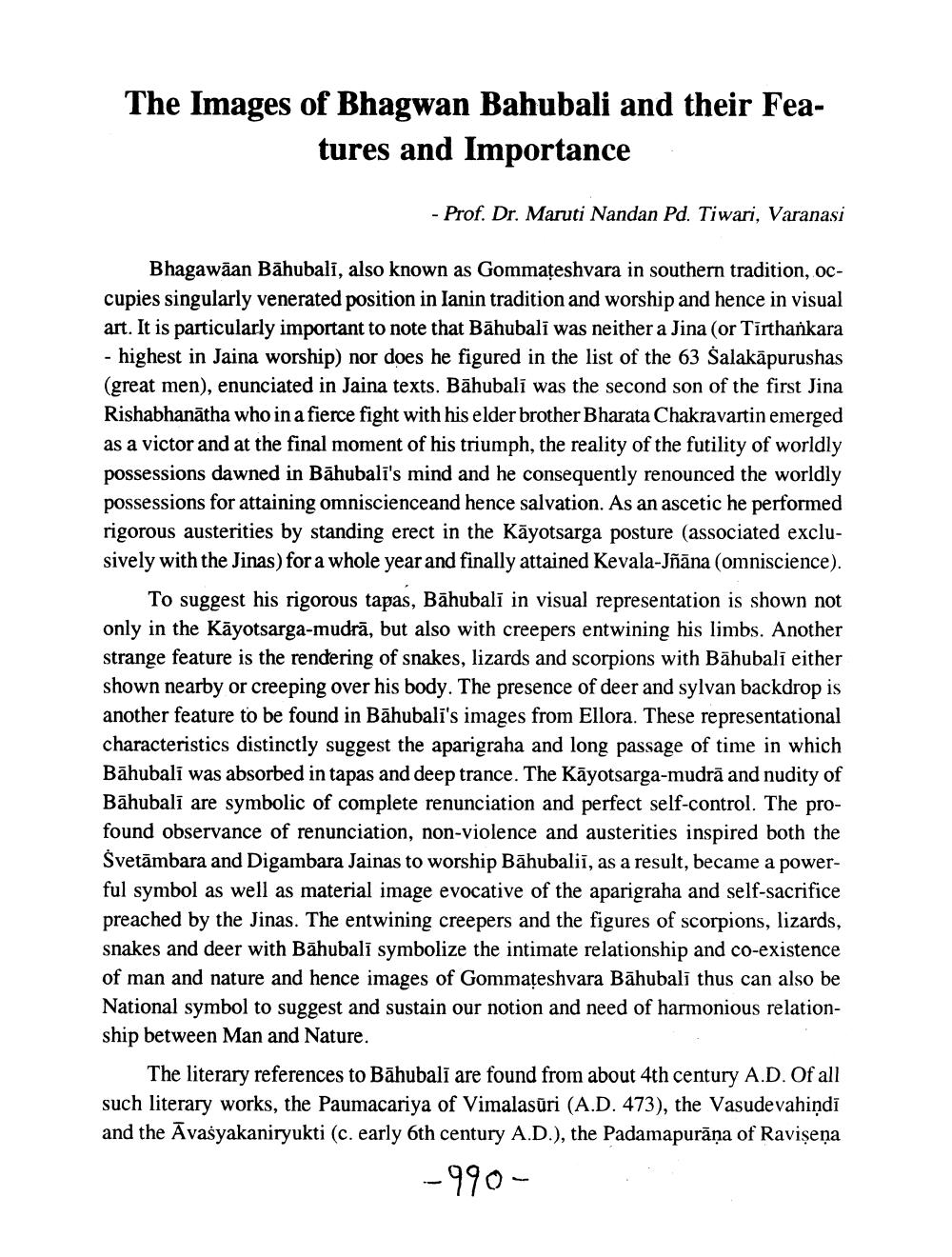________________ The Images of Bhagwan Bahubali and their Fea tures and Importance - Prof. Dr. Maruti Nandan Pd. Tiwari, Varanasi Bhagawaan Bahubali, also known as Gommateshvara in southern tradition, occupies singularly venerated position in lanin tradition and worship and hence in visual art. It is particularly important to note that Bahubali was neither a Jina (or Tirthankara - highest in Jaina worship) nor does he figured in the list of the 63 Salakapurushas (great men), enunciated in Jaina texts. Bahubali was the second son of the first Jina Rishabhanatha who in a fierce fight with his elder brother Bharata Chakravartin emerged as a victor and at the final moment of his triumph, the reality of the futility of worldly possessions dawned in Bahubali's mind and he consequently renounced the worldly possessions for attaining omniscienceand hence salvation. As an ascetic he performed rigorous austerities by standing erect in the Kayotsarga posture (associated exclusively with the Jinas) for a whole year and finally attained Kevala-Joana (omniscience). To suggest his rigorous tapas, Bahubali in visual representation is shown not only in the Kayotsarga-mudra, but also with creepers entwining his limbs. Another strange feature is the rendering of snakes, lizards and scorpions with Bahubali either shown nearby or creeping over his body. The presence of deer and sylvan backdrop is another feature to be found in Bahubali's images from Ellora. These representational characteristics distinctly suggest the aparigraha and long passage of time in which Bahubali was absorbed in tapas and deep trance. The Kayotsarga-mudra and nudity of Bahubali are symbolic of complete renunciation and perfect self-control. The profound observance of renunciation, non-violence and austerities inspired both the Svetambara and Digambara Jainas to worship Bahubalii, as a result, became a powerful symbol as well as material image evocative of the aparigraha and self-sacrifice preached by the Jinas. The entwining creepers and the figures of scorpions, lizards, snakes and deer with Bahubali symbolize the intimate relationship and co-existence of man and nature and hence images of Gommateshvara Bahubali thus can also be National symbol to suggest and sustain our notion and need of harmonious relationship between Man and Nature. The literary references to Bahubali are found from about 4th century A.D. Of all such literary works, the Paumacariya of Vimalasuri (A.D. 473), the Vasudevahindi and the Avasyakaniryukti (c. early 6th century A.D.), the Padamapurana of Ravisena -990




